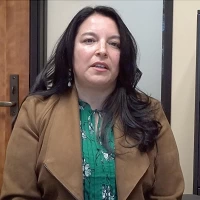 Anytime there’s a significant news event — like a global pandemic, for example — you can expect misinformation to spread across the Internet.
Anytime there’s a significant news event — like a global pandemic, for example — you can expect misinformation to spread across the Internet.
“Fake news” means stories that contain fabricated information, or information that’s based on rumor, shoddy methodology or a partisan agenda.
With the coronavirus, popular fake news stories have included reports that the virus is a manmade bioweapon and that it can be cured by eating garlic or high doses of Vitamin C, among many others.
A Pew Research Center study found that about half of U.S. adults (48%) report having come across at least some news and information about COVID-19 that seemed completely made up, with 12% saying they have seen a lot of it and 35% saying they have seen some.
In light of the prevalence of these dubious stories, we wanted to share some tips for identifying fake news and finding information you can trust.
Spotting Fake Stories
Tip 1: Check the source
Click away from the story to look into who the publisher is, read the site’s “About Us” page or mission statement, check the domain name (be wary of unusual top-level domain names, like “.com.co.), investigate who the author is and what else they’ve published. Does everything seem credible, real and trustworthy?
Tip 2: Read beyond the headline
Headlines can be misleading — often written with sensational claims to get clicks. What’s the whole story? If the story seems outlandish, make sure it’s not a piece of satire.
Tip 3: Pay attention to quality and date
Spelling errors and dramatic capitalization don’t fly at credible news outlets. Also, check when the story was published. Re-publishing old stories can take information out of context.
Tip 4: Check the sources and citations
Credible journalism is led by gathering facts from people, documents and other publications, which means you should see quoted material in the story with named sources and links, when relevant, to information that supports what’s written. If you came across the story on social media, make sure to click through to the story and investigate the publisher as outlined in Tip 1. You can’t always trust what’s shared by your friends.
Tip 5: Check your biases
Does the story tell you what you want to hear? Does it only confirm what you already suspected? Consider if your own beliefs could affect your judgment.
Tip 6: Consult professional fact-checkers or experts
There are many websites dedicated to debunking false information online. Google the topic + fact check, ask a librarian, or do your own detective work to determine fact from fiction.
COVID-19 Sources to Trust
When it comes to the current coronavirus pandemic, the best places to turn to for reliable, trustworthy information are public health organizations and officials, your local and state government, and nonprofit news organizations.
Locally, you can look to your county and its Department of Public Health or Office of Emergency Services for updates and resources. (In Sonoma County, that would be https://socoemergency.org/.)
For state information, look to the Governor’s Office or state Department of Public Health. California Gov. Gavin Newsom has been holding daily briefings on the crisis most days at noon (look to his Twitter page for announcements), and the CDPH is keeping track of case count totals and providing other resources.
Federal organizations to turn to for factual health information include the Centers for Disease Control and Prevention and the World Health Organization.
Local news organizations (like NorCal Public Media!) are also great places to turn to for the latest news and context.
Above all, it’s important when consuming the news to maintain curiosity, be reflective about what you’re reading, actively investigate your sources and look for in-depth coverage. Take breaks when you need to — there’s way more information out there than is necessary for you to stay safe and healthy.
Citations for this story include:
Cornell University
Harvard University
Pew Research Center
NewsGuard

 Live Radio
Live Radio





































